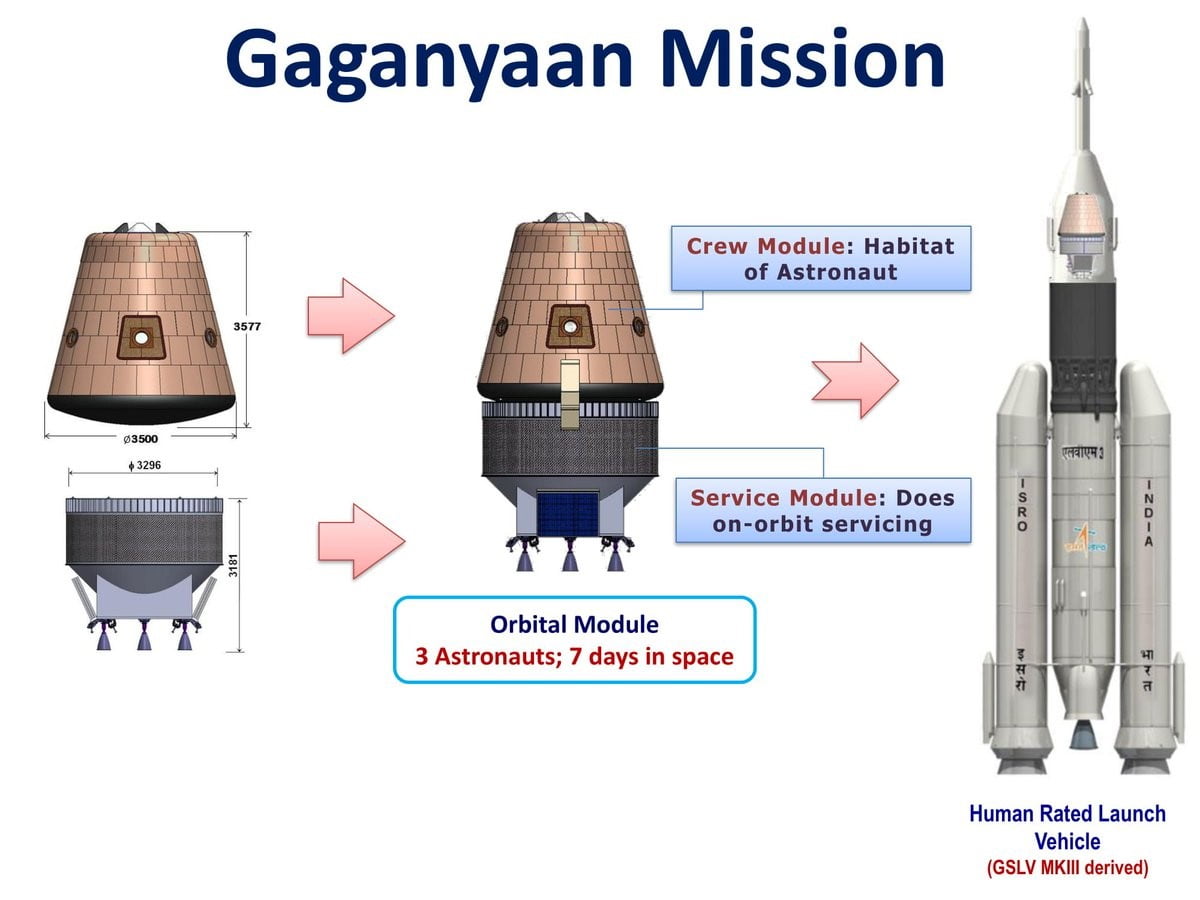Science and Technology
In News: ISRO tests booster for Gaganyaan
- The Indian Space Research Organization (ISRO) has successfully carried out the static test of the HS200 solid rocket booster, taking the space agency one more steps closer to the keenly awaited Gaganyaan human spaceflight mission.
- The test was held at the Satish Dhawan Space Centre, Sriharikota
- Designed and developed by the Vikram Sarabhai Space Centre (VSSC) in Thiruvananthapuram
- The HS200 booster is the ‘human-rated’ version of the S200 rocket boosters used on the geosynchronous satellite launch vehicle Mk-III (GSLV Mk-III), also called the LVM3.
- The GSLV Mk-III rocket, which will be used for the Gaganyaan mission, will have two HS200 boosters that will supply the thrust for lift-off.
- The HS200 is a 20-metre-long booster with a diameter of 3.2 metres and is the world’s second largest operational booster using solid propellants.
- The successful completion of this test marks a major milestone for the prestigious human space flight mission of ISRO, the Gaganyaan, as the first stage of the launch vehicle is tested for its performance for the full duration
- The control system used in the HS200 booster employs one of the world’s most powerful electro-mechanical actuators with multiple redundancy and safety features
- Gaganyaan is a mission by the Indian Space Research Organisation (ISRO) to send a three-member crew to space for a period of five to seven days.

- Launch Vehicle: ISRO’s Geosynchronous Satellite Launch Vehicle GSLV Mk III (3 stages heavy-lift vehicle)
- Components: Consists of a service module and a crew module, collectively known as an Orbital Module (Crew Module carries astronauts & Service Modules carries propellants.)
- The Gaganyaan spacecraft will be placed in a low earth orbit (LEO) of 300-400 kilometres.
- Vyom Mitra: ISRO to send humanoid Vyommitra in unmanned Gaganyaan spacecraft ahead of human spaceflight (Monitoring module parameters)
Geosynchronous Satellite Launch Vehicle GSLV Mk III
- GSLV MkIII, is a three-stage heavy lift launch vehicle developed by ISRO.
- The vehicle has two solid strap-ons, a core liquid booster and a cryogenic upper stage.
- GSLV Mk III is designed to carry 4 ton class of satellites into Geosynchronous Transfer Orbit (GTO) or about 10 tons to Low Earth Orbit (LEO), which is about twice the capability of the GSLV Mk II.
Previous Year Questions (PYQs)
Q.1) With reference to India’s satellite launch vehicles, consider the following statements (2018)
- PSLVs launch the satellites useful for Earth resources monitoring whereas GSLVs are designed mainly to launch communication satellites.
- Satellites launched by PSLV appear to remain permanently fixed in the same position in the sky, as viewed from a particular location on Earth.
- GSLV Mk III is a four-staged launch l vehicle with the first and third stages l using solid rocket motors; and the second and fourth stages using liquid rocket engines.
Which of the statements given above is/are correct?
- 1 only
- 2 and 3
- 1 and 2
- 3 only
Source: The Hindu














